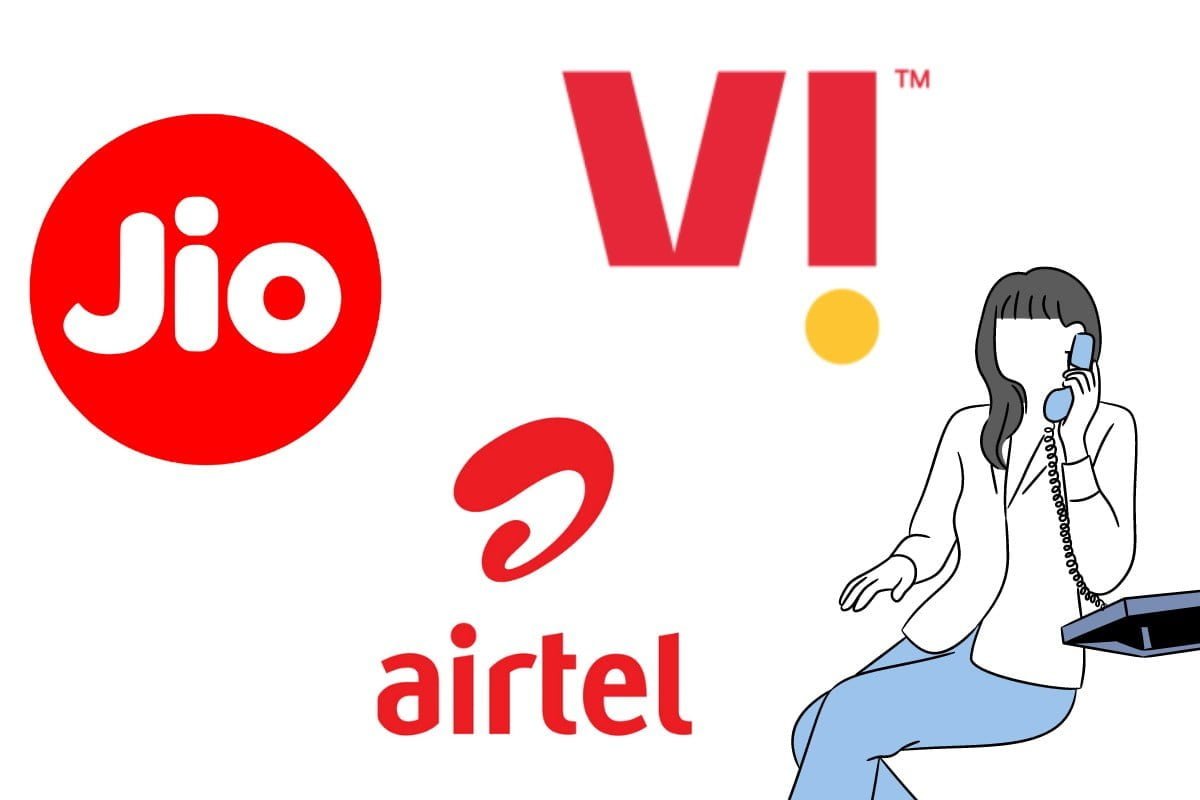If you are someone who keeps track of their mobile bills, you know they have risen in the last few months. That is because the telecom operators implemented a tariff hike on prepaid plans. India has four operators, out of which three are private telecom companies, and all the private operators are now offering similar sort of plans. In the case of Airtel and Vodafone Idea (Vi), the similarity between the plans is even more. When Jio came back in 2016 and promised free services, it became the ticket for people opting Jio as the secondary SIM option. With its consistent services and amazing offers, the telco soon became the reason why many telcos at the time had to shut down shops. Jio soon became the primary option for consumers because it promised 4G networks across the nation and at a very low cost than what the other prominent players were providing 4G services for. This pushed the other telcos (ones which were surviving) to remodel their offerings and make them similar to Jio’s. The other telcos still wanted to play the upper hand and didn’t cut down tariffs enough to the level where Jio was. While there wasn’t too big a difference, it was enough to push consumers towards opting for the services of Jio. Vodafone and Idea merged to become a single entity which we now know as Vodafone Idea (Vi). Time and again, Vi has been accused of copying tariffs of Bharti Airtel. Well, the thing is, while the tariffs offered by both the companies are the same now, the additional benefits are totally different. Vi Hero Unlimited benefits are a class apart from all the other benefits that Airtel offers. Thus, calling Vi’s plans a copy of Airtel’s offerings is a very serious misunderstanding. Regardless, Jio became the largest telecom operator in India in a matter of a few years post its arrival. The telco changed the way consumers looked at telecom services. Indians started keeping two SIMs because the services had become too affordable. For most, Jio was the primary option, while the legacy network users stuck with Airtel and Vi. It would be so good if we could just know the average age of the consumers that each of the private telcos has. I can bet that Jio would have the youngest average age amongst all the telcos. Jio offered very affordable and consistent services to acquire market share. But that’s not what the company plans to do forever. All the telcos increased tariffs, and Jio naturally followed. In 2021, the time for acquiring customers was over. The market was already settled, and now it was time to deliver better quality services for a premium price. The game changed to which telco had the best services instead of the most affordable offerings. Indians rely a lot on the internet today for most of the work they do. Thus, the telco raised tariffs. Tariff hikes had a lot to do with Airtel and Vi struggling to make the kind of money Jio was making from its 4G user base. The push for increasing average revenue per user (ARPU) came hard, and now the telcos are all about higher revenues. Vi and Airtel don’t want low-paying customers as they want to play a ‘premium’ hand over Jio. Make a note – all of it is a marketing gimmick. Airtel’s not the premium brand it says it is. Vi has been struggling to match the level of capex (capital expenditure) on 4G networks that Airtel and Jio are incurring, and lastly, Jio isn’t the all-good, nation friendly – truly affordable operator anymore. Let’s face it, Jio “used” to be the truly affordable operator. But it simply isn’t anymore. While it is good for the investors of RIL (Reliance Industries Limited), the owner of Jio Platforms Limited (JPL), it isn’t the best for the consumers. Yes, technically, Jio is still offering the most affordable tariffs amongst the private players, but it isn’t that big a difference against what you need to pay for the same benefits with Airtel and Vi.
April Saw Jio, Airtel, Vi Losing Active Users
It is worth recollecting that the TRAI (Telecom Regulatory Authority of India) data for the monthly performance of the telcos showed that all the operators lost active users in April 2022. Now that is something to take a note of. Why is it that none of the operators gained any active users? The simple reason is that millions of secondary SIMs were dumped or switched off. Users don’t want to keep their secondary SIMs active anymore. The cost is not the same as it used to be two years back. With inflation running aggressively on the prices of essential commodities, Indians just aren’t as flexible with their budget as they used to be. Around 7.5 million active users were lost during the month of April 2022. At this point, it wouldn’t be too wrong to assume that India might be heading in the direction of a single SIM era very fast with another round of tariff hikes just a few months away.
